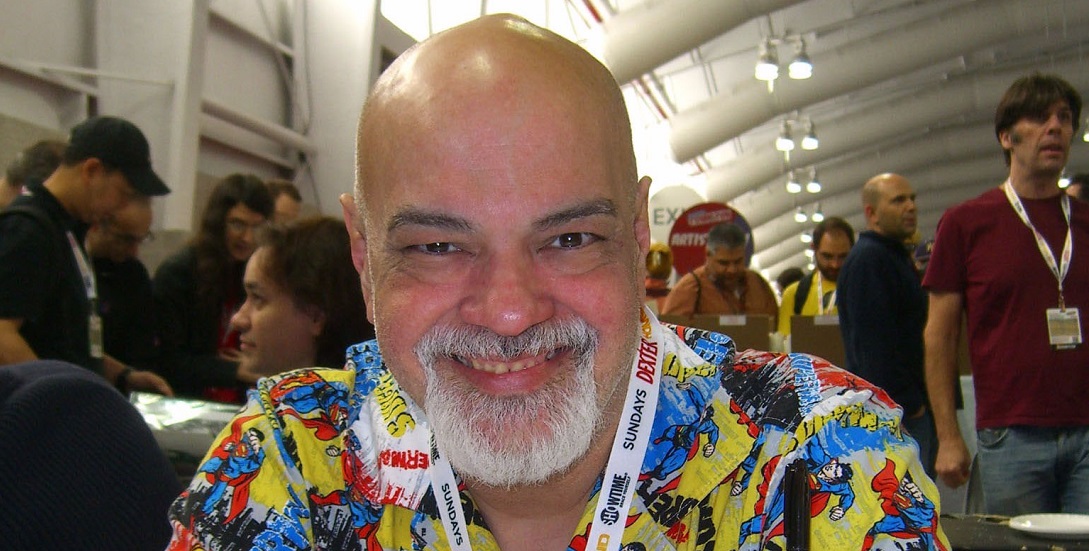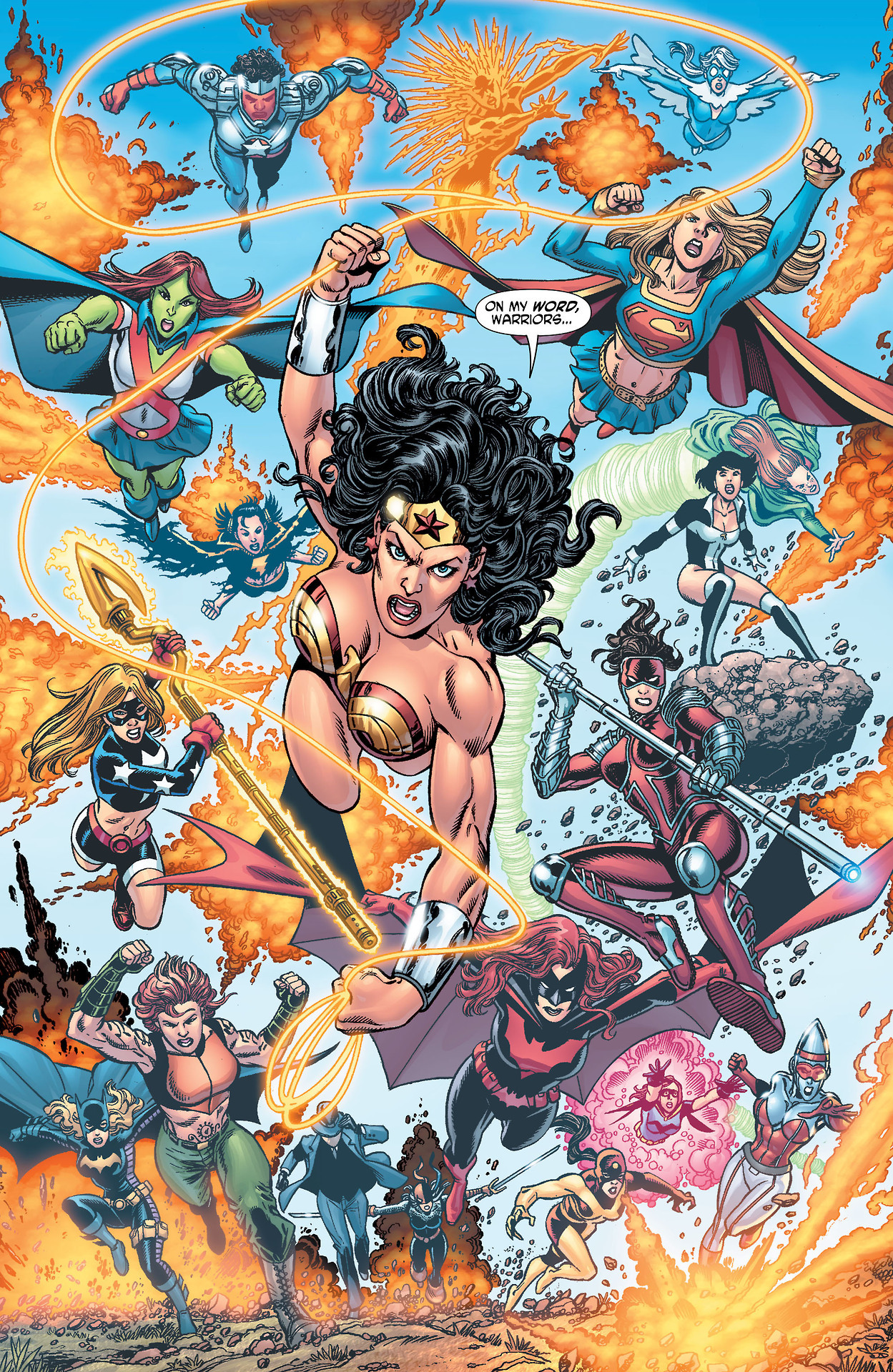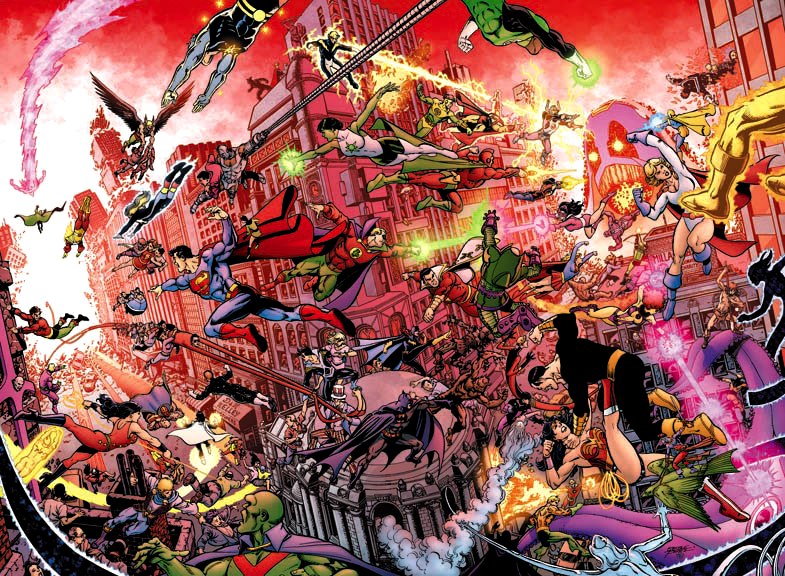
Written by Peter Gaudioso
Award winning writer and artist George Perez was born in New York, NY on June 9, 1954. George is a legendary and prodigious storyteller. Now retired from a 40 year career with DC Comics, this analysis will concentrate primarily on GP’s pencil work.

Here is a good place to start. In this team-photo shot from Amazing Heroes #50, GP does a fantastic job communicating youthful friendship as well as giving everyone their fare share of space. There is also a subtle dampening across all of the individual costumes – so none glow or reflect more than the others. Despite Starfire’s super perm, or Cyborg’s shiny armor, your eye is still drawn to the faces, of which each holds an equal amount of presence. That’s hard to do.
Pérez is famous for bringing to life massive ensembles as they charge into world shattering battles. GP captures perspective like a scientist. No one is ever out of proportion – even amidst the cramped and crowded frame. What is astonishing is that GP never phones-it-in. A lesser artist would duplicate an easily rendered body type and then just add a different costume to each. Not Pérez.
Look at this cover of Wonder Woman #600. GP avoids repetition and the possibility of mirrored forms with striking variations in size, muscle tone and curvature, as well as subtle differences in facial expressions, noses and jawlines.

Notice how different the body language is between each of the airborne characters. Some feel light and wispy while others are barreling forward like defensive linemen. And how about the hair on Wonder Woman!? Each dark and flowing strand pops out despite the madness-in motion surrounding the powerful Amazon.
If I had to be hyper critical here, I will say that GP’s explosions are far too fluffy and cloud-like to convey danger. As well as too similar looking when there are that many of them. But I can forgive factory-line special effects, especially when the foreground characters are drawn so well.

We all know the skillful job of an inker can sometimes be reduced to mere damage control. With stressful deadlines looming over an artist’s head the original draft will most likely have less detailed areas or unclear shadows. Let’s remember that George Perez very often inks for his own pencils. When this rare phenomenon occurs in the comic book world the result is always a tighter, cleaner, more finished look. Notice how versatile GP can be with the color black. From the lines of The Joker’s pinstripe pants to Batman‘s liquid-flowing cape, to the clumpy graffiti on the rocks. Pérez is a master.
Ok. This is the grand finale. This wrap around cover for Crisis On Infinite Earths is pure panoramic perfection. The figures in action have trajectories in nearly every direction. George Pérez is a madman with a pen. The feeling of mayham on these streets is palpable. I’m actually leaning back in my seat to avoid getting hit by a stray shot. The fish-eyed lens effect makes the whole scene feel like it’s going to burst! A fan could spend an hour focusing in on all of the minutia, or just have a casual glance at this awesome maelstrom.

This brief artist analysis doesn’t even chip the surface of the colossal repertoire and monumental legacy that George Perez has created. But I hope it gives you just enough insight into his personality to spot his work when flipping through the long boxes at your local comic shop.